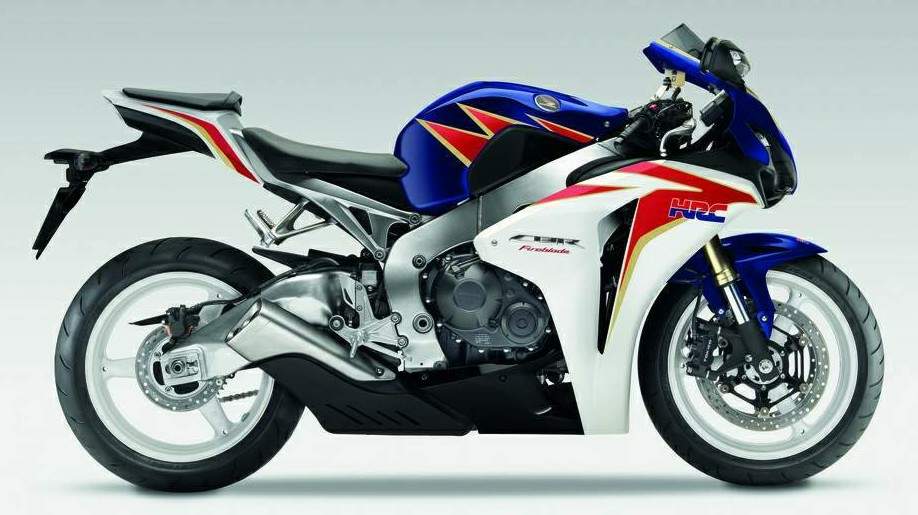
|
|
|
|
|
|
Classic Bikes
Custom Bikes
Individual
Racing Bikes AJP
AJS
Aprilia
Ariel
Avinton / Wakan
Bajaj
Benelli
Beta
Bimota
BMW
Brough Superior
BRP Cam-Am
BSA
Buell / EBR
Bultaco
Cagiva
Campagna
CCM
CF Moto
Combat Motors
Derbi
Deus
Ducati
Excelsior
GASGAS
Ghezzi Brian
Gilera
GIMA
Harley Davidson
Hero
Highland
Honda
Horex
Husaberg
Husqvarna
Hyosung
Indian
Jawa
Kawasaki
KTM
KYMCO
Laverda
Lazareth
Magni
Maico
Mash
Matchless
Mondial
Moto Guzzi
Moto Morini
MV Agusta
MZ / MuZ
NCR
Norton
NSU
Paton
Peugeot
Piaggio
Revival Cycles
Roland Sands
Royal Enfield
Sachs
Sherco
Sunbeam
Suzuki
SWM
SYM
Triumph
TVS
Ural
Velocette
Vespa
Victory
Vincent
VOR
Voxan
Vyrus
Walt Siegl
Walz
Wrenchmonkees
Wunderlich
XTR / Radical
Yamaha
Zero
Video
Technical
Complete Manufacturer List
|
Honda CBR 1000RR Fireblade Tricolour HRC
The motorcycle that has continually combined high horsepower
with a lightweight and agile chassis, the Honda CBR1000RR, returns for 2011.
New for 2011  Review
Sport riders tend to be a proud lot; many even view their riding skills as a
rite of pfassage. So it stands to reason that a liter-class supersport bike
equipped with linked brakes, let alone the anti-lock/combined-brake system
featured on Honda’s latest CBR1000RR, goes against the traditional performance
rider’s mindset. But with electronic rider aids now commonplace in MotoGP
racing, there’s no shame in setting the ego aside and embracing cutting-edge
technology. Source Cycle World
|
|
|
Any corrections or more information on these motorcycles will be kindly appreciated. |